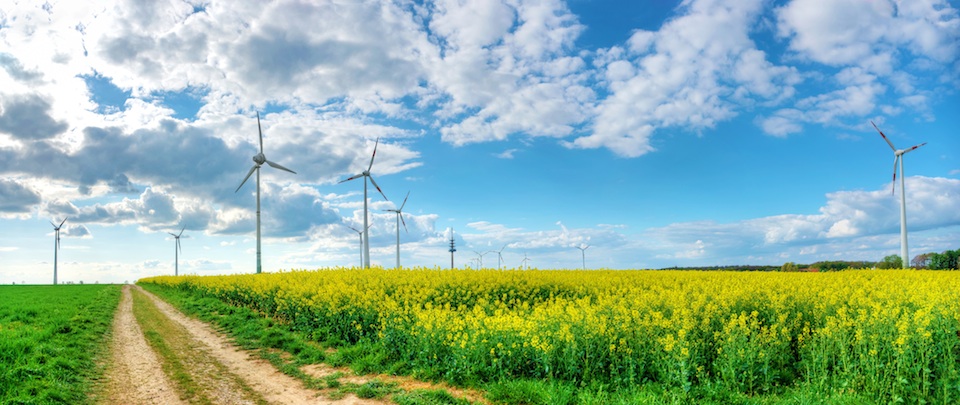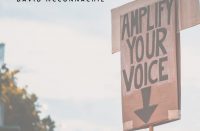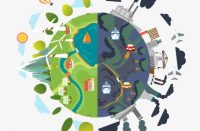This article is part of A\J’s web series Night School. In celebration of back-to-school time and our Night issue, the A\J web team brought you a series of quick lessons, posted between September 16 to October 11, 2013, covering everything from activism tactics and canning tips to how factory farms breed disease.
This article is part of A\J’s web series Night School. In celebration of back-to-school time and our Night issue, the A\J web team brought you a series of quick lessons, posted between September 16 to October 11, 2013, covering everything from activism tactics and canning tips to how factory farms breed disease.
Partnerships are in our blood
A\J started as a joint project of Peterborough activists in Pollution Probe and academics at Trent University. In 1979, it became the journal of Friends of the Earth Canada. In 1993, it became the official journal of the Environmental Studies Association of Canada.
More recently, we have content partnerships with Earth Day Canada, to profile their Hometown Heroes (catch this year’s in the upcoming November/December issue) and Green Living Online, who supply helpful sustainable living content for each issue and our Green Living blog, in exchange for putting some of our political and analytical content on their own website. We also partner with Planet in Focus to deliver the Planet in Focus KW film series. And there have been loads of other partnerships and affiliations in between.
For our final “A\J history” lesson, we’ll look at another partnership example from our early days, a report on a national workshop on soft energy path studies, to which two full issues of A\J (8.3-4 and 9.1) were dedicated in 1979 and 1980. A\J has always worked to “blend and balance the care and precision of scholarship with the timeliness and concern of citizen environmental activism,” as founder Bob Paehlke wrote in the editorial for issue 8.3-4, and has experimented with different approaches to transferring research from an academic setting to a broader audience over the years. This series is a great example of that work.
The Soft Energy Paths series
Thanksgiving weekend of 1978 brought some 20 environmentalists and energy researchers together at Trent University in Peterborough, Ontario, under the sponsorship of Friends of The Earth, Canada, to organize a set of parallel soft energy path studies for each of the ten Canadian provinces. Carrying bulky briefcases and crafty calculators, participants arrived from all parts of the country except Newfoundland, which maintained tradition and joined later, and the Territories, which were deemed to be special cases. Together with Amory Lovins, the founding father of soft energy path (SEP) studies, the workshop reviewed the principles and practices of SEP analysis, and then focused on the approach, format and timing for the provincial SEP studies.
What Is a Soft Energy Path Study?
David Brooks (still an editorial board member) and Sean Casey wrote a handy “Guide to Soft Energy Studies,” which explains the difference between soft and hard energy paths, and what an SEP study entails:
Soft energy paths seek to keep energy consumption within levels that will promote and maintain both an adequate standard of living and an improving quality of life….The goals are a sustainable economy and a healthy environment, together with decentralized decision making, all of which are undermined by excessive levels of energy consumption.
Hard energy paths contrast sharply with soft ones. Their key, yet typically implicit, element is to extend energy consumption, for growing energy demand is accepted and justified as indicative of rising living standards…. Inevitably, they depend upon investments in frontier oil and gas, nuclear power and other large-scale and nonrenewable alternatives. Disagreements are limited to questions of which project, when, with what safety features, built and owned by whom.
A soft energy study is an analysis of the potential in a specific society, with explicit social and economic characteristics, for keeping energy demands within the bounds that can be supplied by renewable forms of energy (or at least by forms that are relatively benign from an environmental point of view and relatively easily controlled from a political one). This means that a soft path study must focus, first, on the services provided by energy; second, on the techniques for and costs of providing those services with less energy; and, third, on the techniques for and costs of using renewable sources to supply whatever energy is demanded. In addition, most soft path studies will consider the transition from our existing hard energy paths to the soft alternative.
Their guide goes on to describe the agreed-upon principles of an SEP study, and provides a manual for any reader wanting to undertake one.
Get the results
One year later, when the issue was published, SEP studies had been completed for eight out of 10 provinces. Chris Conway edited the studies for publication in A\J, and contributed a national overview.
You can read the results of the studies – or learn how to conduct your own – in the issues, which, like all issues mentioned in Night School, are discounted down to just $4.00 when you enter the code “NIGHTSCHOOL4” at checkout.
Also in the ’70s: Magazines before computers
Last week, Bob Paehlke hinted that computers were one factor in the decision to move to uWaterloo in the 1980s. Now he tells us how A\J was assembled without them:
When one edited manuscripts or essays in those days, one used a pen applied to a typed manuscript and then, when satisfied, retyped the whole thing (usually introducing new typos given that the only spelling and grammar check was instinct and a dictionary).
We assembled the magazine with hand-typed text, typed in column width, and had 40ish special paperboard panels on which we hand glued everything. Headlines were produced using decals called Letraset in various sizes, one letter at a time.
We did all this in a very large seminar room starting Friday afternoon and going more or less straight through (with night shifts of different people) until late on a Sunday. Monday morning someone drove the paperboard pages to the cheapest printer we could find in places like Oshawa or Toronto. Having done that for years makes it hard to have universal doubts about technology as a human enterprise.
Laura is a past A\J managing editor. She has an MA in Communication Studies from Wilfrid Laurier University, is an organizing aficionado, lackadaisical gardener, and former musical theatre producer. @inhabitings












